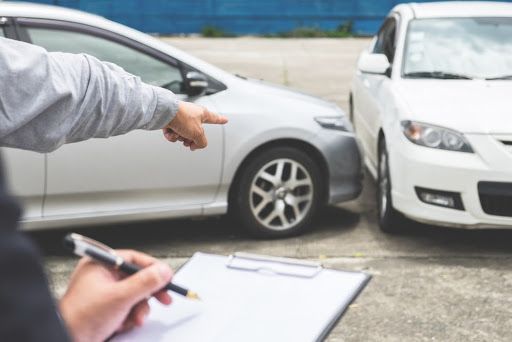
What Does Car Insurance Cover?
Source: Nejron Photo/Shutterstock.com
Car insurance is a legal requirement of owning a vehicle in most states to protect drivers, pedestrians, and other parties on the road. However, many drivers renew their insurance coverage every year without knowing their policy’s specific details. While many people understand insurance basics, it’s quite common for motorists to be unsure of what car insurance actually covers. That’s why it’s essential to protect yourself and your car on and off the road. Keeping up to date on road safety and using a car cover can help tremendously!
Protect Your Vehicle With A Car Cover
Car insurance is a written agreement between a motorist and an insurer to protect them against financial loss if they’re involved in an accident or theft. The insurance company offers coverage for property, liability, and medical costs. There are different types of car insurance, meaning the range of cover varies depending on your policy. However, there are mandatory minimum auto insurance requirements in all states other than New Hampshire and Virginia. Let’s take a look at the different insurance types and what they cover.
Minimum Insurance
Depending on the state, there are different minimum insurance requirements. Liability coverage is the most common form of mandatory auto insurance. This type of insurance has two main elements:
- Bodily Injury Liability
Bodily injury liability can contribute to covering the costs associated with someone else’s injuries and medical costs if you are at fault. - Property Damage Liability
Property damage liability can help cover the damage to someone’s property caused while you are driving. Although there are additional requirements in some states, liability coverage is mandatory in most.

Source: Freedomz/Shutterstock.com
Common Types of Insurance
Most auto insurance companies, national or regional, offer similar levels of insurance. Here are some of the most common types and what they cover.
- Uninsured or Underinsured Motorist Coverage
This type of insurance aims to provide coverage if you’re involved in an accident caused by an uninsured or underinsured motorist. If the driver at fault has no insurance, your policy can cover your medical and vehicle repair costs. If the driver at fault has insurance liability limits that aren’t enough to cover your bills, this policy can come into effect.
Although minimum insurance is a requirement in most states, a lot of motorists drive cars illegally without any coverage. It’s important to be protected if you’re the victim of an accident involving an uninsured driver. - Comprehensive Coverage
Comprehensive insurance has the most expensive premiums, but it provides an extensive level of coverage. It generally covers your vehicle for accident damage, theft, vandalism, and fire. In areas susceptible to extreme weather conditions, drivers often wonder, does car insurance cover hail damage? Although many policies don’t, comprehensive coverage usually does.
Comprehensive coverage normally has a deductible. This is the sum of money that a driver pays out of pocket before the insurance company acts on a claim. Deductibles are negotiable but often involve changing the premium. Comprehensive coverage isn’t a requirement in any state, but some financial lenders will demand this level of insurance if you’re leasing a vehicle. - Collision Coverage
Collision insurance provides coverage if a driver is in an accident where the car strikes an object or another vehicle. It can contribute to repair or replacement costs up to the vehicle’s cash value, minus the deductible. Similarly to comprehensive coverage, collision insurance may be required by a financial lender or leaseholder. - Medical Payments Coverage
Medical payments coverage can help pay for the medical costs for you, your passengers, or family members if they are injured in an accident while traveling in your insured vehicle. This type of insurance has a coverage limit set by the insurance provider. Any expenses above your coverage limit are the policy owner’s responsibility. - Personal Injury Protection (PIP)
PIP is similar to medical payments coverage, but it only contributes to the policy owner’s personal medical expenses. It may also help cover costs endured due to your injuries, such as loss of income. It is available in a limited number of states. - Other Insurance Types
As well as the most common insurance policy options, there are several available additions that cover more niche demands. Some examples include:- Transport expense coverage
- Gap coverage
- Towing cost coverage
- Ride-sharing coverage
- New car replacement coverage
- Sound system coverage
- Classic car insurance

Source: Rawpixel.com/Shutterstock.com
If you have a specific insurance need depending on the make, model, or car modifications, make sure to ask your insurance provider. When shopping for car insurance, the most crucial consideration is suitability. Find a policy that works best for your budget, lifestyle, and driving habits. While it’s important to prioritize safety, don’t overburden yourself with an overly ambitious payment plan. Find a balance that works best for you.
Protect Your Car with a Car Cover
There are other ways to protect your vehicle and ensure your car is safe when you’re not behind the wheel. Car covers prevent damage to your car’s exterior and reduce heat damage to the interior components, providing you with a safer, longer-lasting vehicle. For the best protection available, shop our entire selection of car covers, or call us at (800) 385-3603 to learn more about our car covers’ outstanding features.
Updated